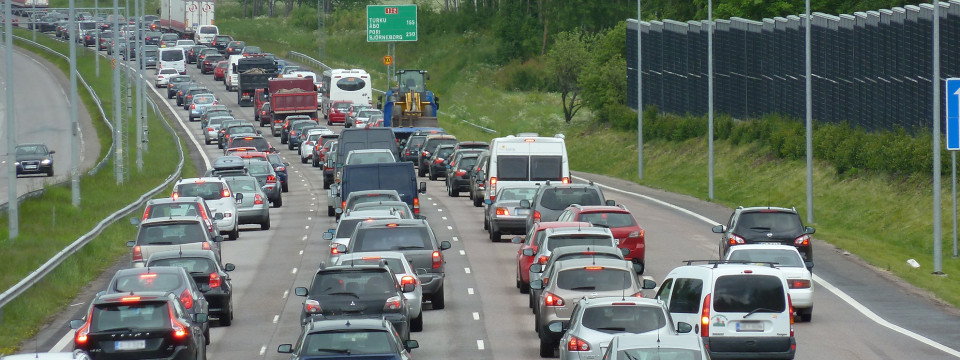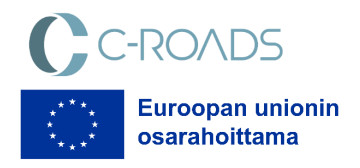Finnish Transport and Communications Agency, Traficom's, report "The implementation model and deployment requirements of the C-ITS system in Finland" (Studies and Reports 18/2025, published on 6 May 2025) addresses safe and interoperable communication solutions for intelligent transport. In other words, how different traffic operators can share real-time information in an optimal, precisely defined way.
In the future, your car may receive a message directly from a traffic light when the light is about to turn to red or green. Or a road maintenance machine sends a message to vehicles approaching from behind that "work is being done here, slow down".
Traficom's report focuses on how such communications can be made to work safely and reliably in Finland, how the system should be built and under what conditions it can be operated.
In the future, billions of real-time messages will be transmitted between people and the transport infrastructure in Finland.
Jouni Rantanen, Sitowise
– Sitowise's part of the project focused especially on examining how privacy and data protection can be ensured in different C-ITS services, message types, and technical implementations. The importance of these perspectives is emphasised in the digitalisation of transport. If digitalisation is made mandatory, the individual will have no choice – this will be perceived as threatening, unlike in voluntary digital services. Collecting traffic data significantly affects people's everyday freedom and privacy, says Jouni Rantanen, Senior Specialist at Sitowise.

The report provides a comprehensive Finnish handbook for the technical implementation of the C-ITS services. It defines the necessary infrastructure and security framework, how messages are transmitted intact and unaltered, and how the privacy of road users is ensured. At the same time, it was investigated how everything can be made to work together at the European level and what are the technological choices on the road to phased deployment. This is key to ensuring that the intelligent transport of the future works reliably, safely and in accordance with EU standards.
A similar examination has not previously been carried out in Finland with this level of accuracy. The report also includes a proposal for an implementation model for the C-ITS system under Finnish conditions.
– The introduction of C-ITS services have been prepared in the EU for more than a decade as technology, regulation and standardisation have developed in parallel. Much is ready, but not all. The report provides an extensive overview of the existing regulations and technical alternatives and provides a well-justified proposal on how the national architecture should be developed and implemented as we move towards the deployment of the system in Finland. In the future, billions of real-time messages will be transmitted between people and the transport infrastructure in Finland, Rantanen explains the significance of the report.
The project was implemented by a project team assembled by Sitowise, where Ramboll Oy and Nodeon Finland Oy participated as subcontractors. The project team consisted of Jouni Rantanen and Marika Haapajärvi from Sitowise, Ville Kilpiö from Ramboll Oy, and Timo Majala, Lari Väänänen and Jarno Kallio from Nodeon Finland Oy.
What does C-ITS stand for?
The abbreviation stands for Cooperative Intelligent Transport Systems. It enables the entire traffic infrastructure (cars, traffic lights, road machines, etc.) to communicate with each other in real time, for example by warning each other of danger, obstacles, speed changes or congestion.
Why is C-ITS important?
From a safety perspective, the system can reduce accidents by anticipating dangerous situations. For traffic flow, real-time information exchange enables smoother traffic management and reduces congestion. In terms of environmental benefits, more efficient transport helps to reduce unnecessary stopping and emissions.
Key elements of the report
The report is a long-awaited summary of the national implementation of C-ITS services in Finland, especially from a technical point of view.

Regarding technical solutions, data transmission and architecture options between the various system components are evaluated. Report delves into the procurement options for the C-ITS central station and data exchange server, which are not yet commercially available. The Finnish implementation model relies on long-range data transfer, i.e. mobile phone networks. The report also covers preliminary financial calculations, governance models, risk management and phased implementation.
The report places particular emphasis on EU compliance and the required security framework: it defines how EU CCMS-compliant message certificates are constructed for secure communication and establishes clear rules on who can send and receive official traffic information.
Cybersecurity and privacy are also at the forefront, as traffic related messages may contain personal data (such as location or indirect identification of the car). There must be clear grounds for collecting this data and it must be protected by PKI certificates and limited retention periods in accordance with the GDPR, among other things.
The work is particularly significant right now, as interactive intelligent road transport services, i.e. C-ITS (Co-operative ITS) services, are to be widely introduced in Finland and elsewhere in Europe in the next coming years. The aim of the Finnish authorities is to create good conditions for the adaption of C-ITS services and for services that meet the user needs and promote the development targets of the transport system in Finland. At the same time, the development of automated vehicles and the digitalisation of transport is accelerating, and interoperability is crucial to make different technologies work together seamlessly without fragmentation.
Read more about the report here.

